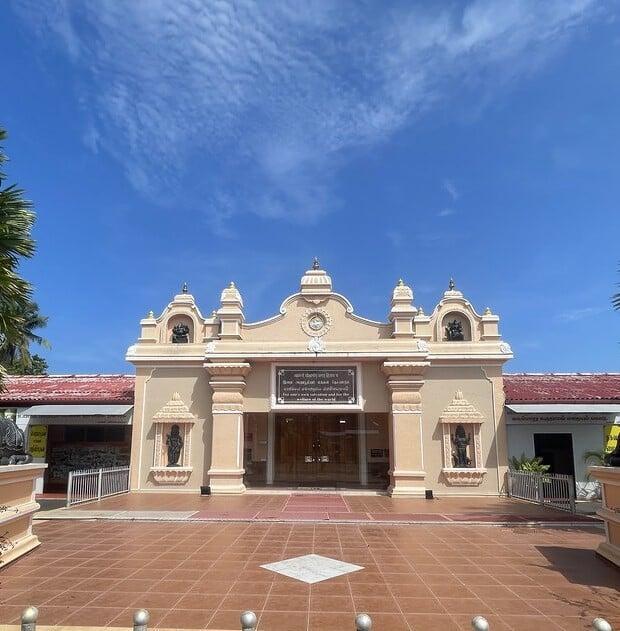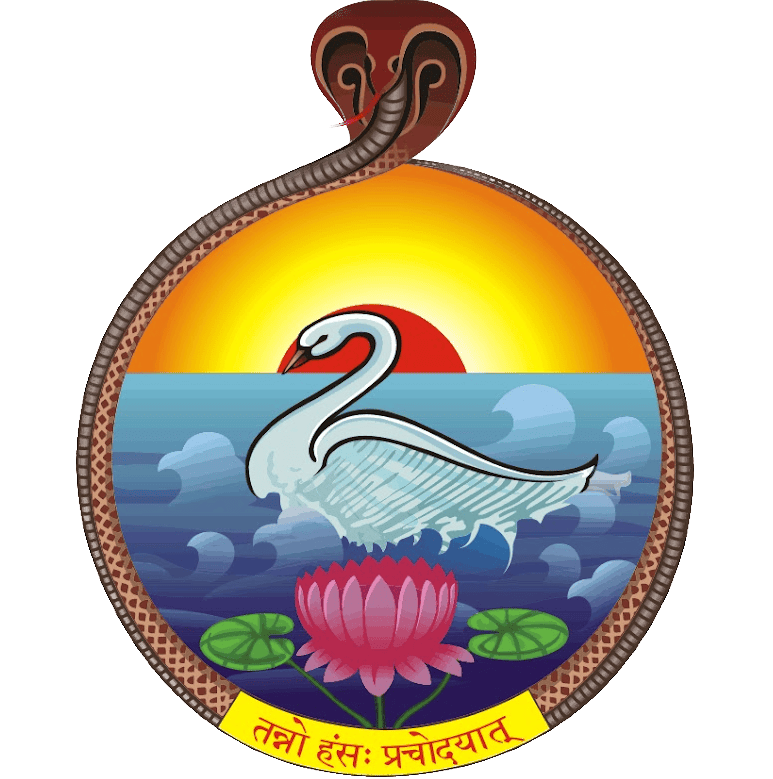
History of Ramakrishna Mission Batticaloa
Swami Vivekananda in Sri Lanka t the tail end of India near Rameshwaram, divided by a dim demarcation, an island called ‘pearl upon the brow of India’1 woke up to promising news. As one of the British colonies, Sri Lanka was wading through a rough sea that even the groans of the natives grew weak, and their spirits drowned in despair. A massive morale booster to Sri Lanka was the need of the hour, and it did come from an unexpected source. A glimmer of hope peered through the prophetic report in a local paper The Ceylon Independent, regarding the impending visit of Swami Vivekananda and its likely impact
The Arrival of Sri mat Swami Vivekananda (The Hindu Sage)—The 15th of January will be a memorable day in the annals of the Hindu Community of Colombo, being the day on which a teacher of the most wonderfulabilities and attainments, a teacher who belonged to the most sacred order of the Hindu spiritual lights, the Sannyasies (sic) of India, had been welcomed by them. His visit, it is hoped, will prove an epoch, marking the dawn of an unprecedented spiritual activity.
The Hindu intelligentsia and nationalists, who had been closely following Swamiji in the newspapers, learned about his phenomenal success in hoisting the flag of Eastern spirituality and culture on Western soil. With renewed confidence, under the leadership of Nationalist Sir Ponnambalam Ramanathan, a commit tee made elaborate arrangements to provide a grand reception for Swamiji and also to take him around for a trip, covering more than 400 km from Colombo to Jaffna. Returning from the West with accolades to his motherland in 1897, Swamiji alighted at the Islet for a 10-day sojourn (January 15–25), and as foretold, lifted the sagging spirit of Sri Lankans. In the cyclonic phase, Swamiji inspired all of them with high spirits as his mere presence did that everywhere.
Early in 1893, Swamiji visited the island when the ship had cruised to the port of Colombo during his historic voyage to represent Indian spiritual ideals at the World Parliament of Religions, Chicago. In British Ceylon, no one might had even remotely imagined then that Swamiji was divinely destined to change the course of the history, and in less than four years, a precursor to the great gala of Indian receptions in honour of his superhuman service to Hinduism would first roll out from the Sri Lankan shores.The 125th anniversary of his historic visit was celebrated in Sri Lanka last year. Swamiji’s third and final visit to Sri Lanka occurred when he headed to the West for the second time in June 1899. Even after a passage of two years, we get an inkling of how much Swamiji was loved, or rather worshipped in Sri Lanka from an animated ac count of Sister Nivedita who accompanied him. Oh, what a crowd! And how devotedly they looked at Swamiji! He pointed to his European clothes, but it made no difference. He was their Avatar just the same. Then he took a small fruit and sipped milk … and then, as he turned to go, you should have heard the shout. ‘Praise be to Siva, the Lord of Parbutty (Parvati)! Hail’, it was deafening, and you should have seen the crowd in the street when we got out and the crowd on the landing stage. The Hindu society of Sri Lanka had a radical outlook on religious externals. Pricking them on that pore, Swamiji jokingly, perhaps with his overcoat, trouser, and shoes, ‘pointed to his Euro pean clothes’ to test their tolerance. But the con servatives were, nevertheless, upbeat and adored him as ‘their Avatar’, a divine incarnation. In the wake of Swamiji’s visit, Vivekananda Societies came up throughout the nation. Surely, this enormous enthusiasm set the stage for the Ramakrishna Mission.
But an interim spade work, before the second visit of Swamiji to Sri Lanka, had melted into thin air for want of records, about which clues were dropped by Swamiji himself. A warn ing rebuke and warming pat in quick succes sion found in the Swamiji’s epistles had thrown up more questions than answers. Among the direct disciples of Sri Ramakrishna, the name of Swami Niranjanananda didn’t figure much in the public domain. But his work was the one we are referring to! As early as 1894, Swamiji wrote to Swami Ramakrishnananda: ‘Why doesn’t Niran jan (Niranjanananda) learn Pali in Ceylon, and study Buddhist books? I can not make out what good will come of aimless rambling.’ In the next year, Swamiji in a differ ent vein appreciated his brother sannyasin say ing: ‘To tell you the truth, I do not find among you any distinction of great or small: everyone has the capacity to manifest, in times of need, the highest energy. I see it. … Niranjan has done much work in Ceylon and elsewhere.’4 But the role of Swami Niranjanananda in the Sri Lankan work is pretty obscure except for one visible output—T G Harrison, a British Bud dhist and a resident of Colombo. T G Harri son embraced Vedanta, and was initiated into a mantra by Swamiji. This devout disciple along with Swami Niranjanananda received Swamiji at the port of Colombo and tailed him like a shadow up to Calcutta in 1897. We gather that T G Harrison, through his oration, spread the message of Swamiji in Sri Lanka
Reaching Calcutta, Swamiji handpicked Swami Shivananda for the Sri Lankan work. Swami Shivananda, a direct disciple of Sri Ramakrishna, landed in Colombo in 1897 and conducted spiri tual classes for the local devotees for about seven or eight months. Subsequently, a few direct dis ciples, Sister Avabhamia, and many monks of the Ramakrishna order kept the islanders aflame with the message of Vedanta.The joining of versatile Professor Mylva ganam into the Ramakrishna Order from SriLanka with the guidance of the visiting Swami Sharvananda consoli dated the task ahead on the island, so to say. He took to monastic life in 1922 at Ramakrishna Math, Chennai. An ini tiated disciple of Swami Shivananda, he was or dained as Swami Vipu lananda in 1924. He was a multi-linguist, a great savant writer, and a dedicated saint.
In 1925, Swami Vipulananda returned to his homeland and officially established the Ramakrishna Mission in British Ceylon. Before it, as early as 1917 itself, Swami Sharvananda, the then head of Chennai Math, brought a school in Jaffna under the wings of Ramakrishna Mis sion. Swami Vipulananda opened a home for the orphaned and underprivileged boys at Jaffna in 1926, which was later shifted to Batticaloa in 1929 on a permanent foundation. A year later in 1930, in the capital city of Colombo, the head centre of the Ramakrishna Mission in Sri Lanka was established and Swami Ghanananda became its first in-charge. The Batti caloa Ashrama was made a sub-centre to it. T he Colombo Ashrama charted out the cultural spiritual activities as its core for children and the general public. A Sunday school for Hindu chil dren was started in the Colombo centre in the early 1950s and was officially adopted as a model by the Government of Sri Lanka. It remains one of the largest Sunday schools in good stead. Notably, this cultural grooming of children was later refashioned as
Balak-Sangha, Mandir, Vihar and so on, and was introduced into the Ramakrishna Order centres across India and else where. An international auditorium with guest houses has been the centre of attraction in the Colombo centre. Students aspiring for higher studies had their boarding facilities in these guest houses before the economic downturn of the late 1970s interrupted the service. A library with 8000 books and a play park for children with a beautiful garden draws more footfalls.
Vipulanandaji’s works on spirituality, music, drama, literature, etc., are now published by the Hindu Religious and Cultural Affairs Ministry of Sri Lanka. Sri Lankan students read about him in their curriculum, and people regularly on their own initiative celebrate his contributions! Besides observing his birth and death anniversaries, important functions begin with the recitation of his hymns and garlanding of his statue. Many institutions are named after him. Funds are kept in his name with the Sri Lankan Government to sponsor religious and charitable projects. Sri Lanka and Germany have issued stamps in his honour. There are short movies on him on YouTube and other social media. Swami Vipulananda continues to inspire young and old in the Sri Lankan society. When leaving from Colombo to take up the editorship of the Prabuddha Bharata, his advice to a group of devotees is singularly significant. He told them “This is an island. Here we develop insular qualities only. We must go out into the wide world to study men and things.”9 This statement is very relevant to the present-day Sri Lanka. Given the past issues and the post-Covid economic milieu, it is high time that this beautiful island nation listens to the exhortations of this sage of the soil and builds bridges within and without to regain its peace and prosperity
